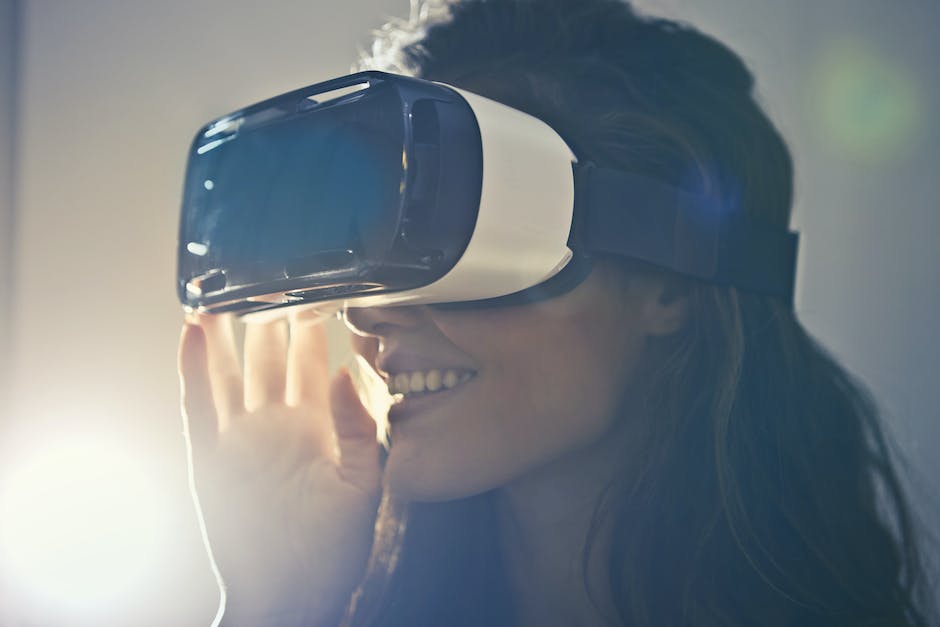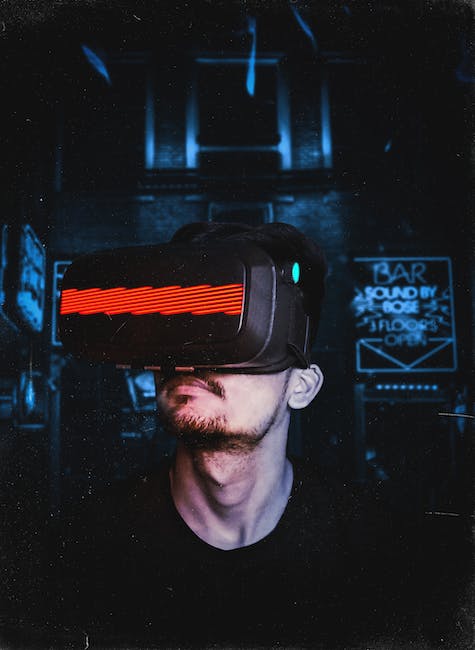Bespoke Augmented Reality Software
What is AR software?
Augmented reality software (AR software) is a technology that allows for the creation of virtual elements that blend seamlessly into a real-world experience. It uses computer-generated graphics, sound, and video to enhance and transform the user's perception of reality. AR software can be used in a variety of ways, from entertainment and gaming to education, healthcare, industrial design, and more.Contact us if you are wanting to have a bespoke Augmented Reality application developed?
One of the most popular uses of AR software is in mobile apps, where it is used to enhance the user experience by providing real-time information and virtual elements that interact with the user's surroundings. For example, a hotel might use AR software to create a virtual tour of its facilities, allowing potential guests to explore the property before booking a stay. Gaming companies often use AR software to create immersive experiences that merge the real and virtual worlds, enabling players to interact with virtual elements in real-time.
AR software is also used for industrial applications, such as product design and marketing. For example, car manufacturers might use AR software to create virtual environments where customers can explore the car and its features before it is built. Medical professionals use AR software to help diagnose and treat patients, such as using AR software to create virtual models of organs or to simulate surgical procedures.
Overall, AR software has a wide range of uses and can provide businesses with a unique and engaging way to interact with their customers. Its ability to enhance the user experience and provide real-time information has made it a popular choice for companies looking to incorporate new technologies into their operations.

What are the main functions of AR software?
AR software can broadly be categorized into four main modules.1. Tracking and Mapping Module: This module is responsible for mapping the physical environment and tracking the objects and users within it. It uses various sensors like cameras, gyroscopes, accelerometers, and depth sensors to determine the position, orientation, and motion of objects in 3D space. The module also incorporates algorithms for visual feature detection and tracking, markerless tracking, and SLAM (Simultaneous Localization and Mapping) for accurate and seamless AR experiences.
2. Rendering and Graphics Module: This module is responsible for rendering 3D graphics and overlaying them onto the real-world environment. It comprises tools and techniques for creating interactive 3D models, integrating special effects, animations, and textures, and rendering them in real-time. The module also incorporates lighting, shading, and rendering engines for achieving realistic and immersive AR experiences.
3. Interaction and User Interface Module: This module is responsible for enabling intuitive interaction between the user and the AR environment. It comprises tools for creating gesture recognition, voice recognition, haptic feedback, and other modalities for input and output. The module also incorporates user interface (UI) design principles for creating seamless and intuitive AR experiences.
4. Data and Analytics Module: This module is responsible for tracking and analyzing user behavior and other relevant data related to the AR experience. It incorporates data tracking and analytics tools for capturing metrics like user engagement, time spent, and conversion rates. The module also enables A/B testing, user segmentation, and other techniques for analyzing and improving the AR experience over time.
Overall, AR software provides functionality such as creating immersive and interactive experiences, enhancing marketing and advertising campaigns, improving training and education, simplifying maintenance and repair work, and providing valuable insights through data and analytics.
Data / systems integration
AR software is often integrated with various types of systems such as eCommerce platforms, CRM systems, learning management systems, advertising networks, and social media platforms, to name a few. These integrations allow businesses to provide unique and engaging experiences to their customers, improve data analysis, and streamline their workflows.APIs or other tools are often used for integrating AR software with these systems. APIs, or application programming interfaces, provide a way for different software systems to communicate with each other. This integration allows for the exchange of data between the two systems, enabling businesses to make use of the data collected by AR software within their existing systems.
When considering integrating AR software with other systems, it is important to consider the compatibility and ease of integration. Integration can involve technical complexities such as ensuring that the APIs or other tools used are compatible with the systems being integrated, managing security concerns, and ensuring that data is properly authenticated and authorized.
Another consideration is potential reliance on third party software providers, which can add additional complexity and maintenance needs. Also, the technology stack used by the AR software and the other systems may need to be taken into account to ensure seamless integration.
In summary, integrating AR software with other systems is critical for providing unique and engaging experiences to customers, improving data analysis, and streamlining workflows. Using APIs or other tools can facilitate this integration, but careful consideration will need to be given to compatibility and ease of integration, as well as potential reliance on third party software providers and maintenance considerations.
Who uses AR software?
Organisations of various sizes and in different markets and verticals can benefit from using AR software. Some of the popular verticals where AR software is used include education, healthcare, manufacturing, retail, and entertainment.In the education sector, AR is used for creating immersive learning experiences, such as interactive textbooks and educational games. For healthcare, it can be used for surgical simulations and training, medical imaging, and patient education. In manufacturing, AR can improve production efficiency and enable remote maintenance and repairs. In retail, AR can enhance the shopping experience through virtual try-ons and product demonstrations, and in entertainment, AR can be used for creating interactive experiences in gaming and events.
Overall, any organisation looking to enhance customer engagement, improve employee training and productivity, or leverage cutting-edge technology can benefit from using custom AR software.

Benefits of AR software
Organisations use augmented reality (AR) software for a variety of reasons. One key benefit is that it can enhance the customer experience and engagement through immersive and interactive digital content. For example, AR technology can allow users to visualize products in their own environments before making a purchase decision.AR software can also increase efficiency and productivity in fields such as manufacturing and logistics, where employees can use AR-assisted guides to perform tasks more quickly and accurately. Additionally, AR can be used for training purposes, allowing employees to practice complex procedures or scenarios in a safe, simulated environment.
Another benefit of AR is its ability to provide real-time data and analytics, which can help organizations make more informed decisions. For example, AR-assisted maintenance could provide real-time data on machine performance, helping to identify potential issues before they become major problems.
Overall, AR software can bring numerous benefits to organizations, including increased customer engagement, improved productivity, enhanced training capabilities, and better data analytics. As such, it is definitely worth considering as a tool to incorporate into your business.
Some of the players in the AR software market
Some of the main brands of AR software include:1. Vuforia: Vuforia is a popular AR software that is widely used for creating interactive experiences. It offers a range of benefits, such as object recognition, text recognition, and image recognition. However, some customers have reported issues with compatibility and stability when running Vuforia on certain devices.
2. ARToolKit: ARToolKit is an open-source AR software that offers a range of features such as marker tracking, camera position tracking, and multiple marker detection. One of the benefits of ARToolKit is its ease of use, as it has a relatively simple API. However, some customers have reported issues with the quality of the image recognition.
3. Unity: Unity is a popular 3D game engine that also offers AR capabilities. It offers a range of benefits such as cross-platform development and a large community of developers. However, some customers have reported issues with the steep learning curve and the lack of built-in AR features.
4. Wikitude: Wikitude is an AR software that offers features such as geolocation, image recognition, and 3D tracking. One of the benefits of Wikitude is its ease of use, as it offers a drag-and-drop interface for creating AR experiences. However, some customers have reported issues with the performance and stability of the platform.
5. ARCore: ARCore is an AR software that is designed specifically for Android devices. It offers benefits such as motion tracking, environmental understanding, and light estimation. However, some customers have reported issues with the limited device compatibility and the lack of support for iOS devices.
Overall, it's important for business owners to carefully evaluate their needs and the features of each AR software before choosing one to work with. By understanding the benefits and shortcomings of each platform, they can make an informed decision and avoid any potential issues down the line.
Benefits of off-the-shelf AR software
Off-the-shelf AR software can provide a cost-effective solution for businesses that require basic AR functionality. It is readily available and can be quickly implemented without the need for extensive customization. This software is also generally easy to use, making it accessible to businesses with limited technical expertise. Additionally, updates and support for off-the-shelf AR software are often provided by the software vendor, reducing the maintenance burden on businesses.Limitations of off-the-shelf AR software
Off-the-shelf AR software can be a good option for businesses that want to quickly implement basic AR functionality into their operations. However, it's important to understand that these pre-packaged solutions often have limitations and may not fully meet your specific needs.One major limitation of off-the-shelf AR software is limited customization options. These solutions are designed to work for a wide range of businesses and use cases, so they may not have the specific features or functionality that you require. For example, if you need to track a specific type of object or integrate with a particular data source, you may not be able to do so with pre-built AR software.
Another limitation is scalability. Off-the-shelf AR software may not be able to handle the high volumes of data or traffic that your business requires as it grows. As your needs change and your business expands, you may need to invest in a more robust and scalable AR solution.
Off-the-shelf AR software can also be limited in terms of user experience. While these solutions may offer basic AR functionality, they may not have the same level of interactivity or realism that you can achieve with custom-built software. Users may also have difficulty navigating and using pre-built AR software if it doesn't align with their specific needs and workflows.
Overall, while off-the-shelf AR software can be a good starting point, businesses that want to fully leverage the benefits of AR technology may be better served by investing in a custom-built solution that can be tailored to their specific needs and requirements.
Is bespoke AR software a viable option?
Bespoke or partially bespoke AR software provides several benefits to businesses. One of the primary benefits is that it can be customized to meet the specific needs of a business. This means that the software can be designed to fit perfectly with the existing systems and processes of a business, thereby optimizing its performance.Furthermore, bespoke AR software can improve the overall efficiency of a business process by automating routine tasks or reducing the time it takes for employees to complete a task. This can help to save time, reduce costs and increase productivity.
Successful use cases of bespoke AR software include applications in industries such as retail, construction, tourism, and healthcare. In retail, AR technology is being used to enhance the in-store experience by providing customers with relevant information and improved visualizations of products.
In the construction industry, AR technology is being used to create building models that can be viewed in 3D, allowing architects and contractors to see how different elements fit together and identify any potential problems early on.
In the tourism industry, AR technology is being used to provide visitors with enhanced experiences, such as interactive tours of historical sites or immersive experiences at theme parks.
In the healthcare industry, AR technology is being used to assist in surgical procedures, allowing doctors to see a patient's anatomy in real-time and perform procedures with greater precision.
Overall, bespoke AR software has the potential to provide significant benefits to businesses by improving efficiency, enhancing the customer experience, and providing unique and innovative solutions to complex problems.

Fun facts about AR software
Augmented reality software has seen significant growth in recent years, with the global AR market projected to reach $75 billion by 2023. This growth can be attributed to the increase in popularity of AR applications, which can be used in a variety of industries.One of the most notable industries embracing AR software is the retail industry. AR technology has enabled retailers to create virtual try-on experiences, allowing customers to visualize how clothing and accessories will look before making a purchase. In fact, it is estimated that AR-powered virtual try-ons can increase sales by up to 90%.
Another industry utilizing AR software is healthcare. AR technology allows medical professionals to better visualize and interact with medical imagery, such as MRI and CT scans. This can lead to more accurate diagnoses and improved patient outcomes.
AR software is also being used in the entertainment industry, with the popularity of AR-powered mobile games such as Pokemon Go and Harry Potter: Wizards Unite. These games utilize AR technology to create immersive experiences that blend the virtual and real world.
Overall, AR software is a rapidly growing market with a wide range of applications across industries. It has the potential to revolutionize the way we interact with technology and the world around us.
AR software FAQ
Q1. What is ar software and how can it benefit my business?A1. Augmented reality (AR) software is a type of software that overlays digital content such as images, animations, and videos onto the real world through devices like smartphones, tablets, and glasses. AR software can benefit businesses by providing a more interactive and immersive experience for customers, improving product visualization, increasing engagement and educational aspects of products, and helping with marketing and branding.
Q2. What kind of businesses can benefit from custom ar software development?
A2. Many industries can benefit from AR software, including retail, healthcare, education, tourism, real estate, and entertainment. Any business that wants to provide an engaging and interactive experience for its customers can benefit from AR software.
Q3. How is custom ar software different from off-the-shelf solutions?
A3. Custom ar software is tailored to the specific needs of a business and its customers, allowing for more customization and integration with other systems. Off-the-shelf solutions may be more affordable, but they may not provide the same level of functionality or flexibility.
Q4. How long does it take to develop custom ar software?
A4. The development timeline for custom AR software can vary depending on the complexity of the project and the specific requirements of the business. It can take anywhere from several weeks to several months to develop custom AR software.
Q5. What is the development process for custom ar software?
A5. The development process for custom AR software typically includes discovery and planning, design and prototyping, development and testing, and deployment and maintenance. Each stage involves collaboration between the development team and the business to ensure that the software meets the needs of the business and its customers.
Q6. What are the potential challenges of developing custom ar software?
A6. Developing custom AR software can be challenging due to the complexity of the technology and the need for collaboration between the development team and the business. Challenges may include ensuring compatibility with different devices and platforms, integrating with other systems, and ensuring user adoption and engagement.
Q7. What are the costs associated with custom ar software development?
A7. The costs associated with custom AR software development can vary depending on the complexity of the project, the specific requirements of the business, and the development team. It is important to work with a qualified and experienced development team to ensure that costs are managed effectively and that the software meets the needs of the business and its customers.
Next Steps?
Are you considering implementing augmented reality technology in your business operations? Do you need a custom-made AR software to meet your unique business needs? Then, it's time to take the first step towards transforming your business with the latest advancements in technology. Our team of AR software development experts is here to help you make an impact in your industry.From interactive product demonstrations to real-time visualization of data, our bespoke AR software solutions can revolutionize the way you do business. With our in-depth market knowledge and vast experience, we can guide you through the entire software development process and deliver a tailored solution that meets your requirements.
Don't settle for off-the-shelf solutions that do not cater to your specific needs. Invest in a custom-made AR software that aligns with your business goals, enhances customer experience, and gives you a competitive edge. Contact our team today to discuss your project requirements, and we'll be happy to provide you with a free consultation and a bespoke software solution that meets your unique business needs. Together, let's bring your vision to life!
Read more about the main software category Entertainment Applications.
Other services in Entertainment Applications category:
Want a quick quote for the development of custom Augmented Reality Application?
Contact us to discuss your questions about bespoke Augmented Reality Applications.
